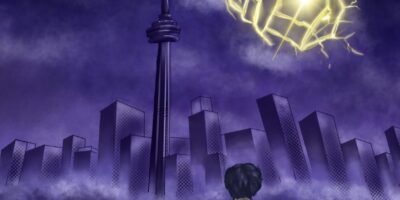This year’s Enginuity EXTREME challenge was a showdown of some of Waterloo’s most creative and resourceful plummers. There was representation from most disciplines, and even some upsets by the underdog 1A teams.
Enginuity requires a combination of puzzle-solving skills, inventive use of materials, and improvisation. It started off in POETS with sheets of brain-teasers which the groups had to solve throughout the night. Teams then had to break off, and compete in a number of design challenges. There was a marble run upstairs, where they scrambled to build the most epic marble track possible. In the CPH foyer teams designed and tested catapults made from popsicle sticks, spoons, elastic bands, and whatever else they thought might work. Inside POETS, the bridge-builders had to use popsicle sticks, cardboard, hot glue, and other craft supplies to construct the strongest bridge. All design teams were on a time budget, which led to some creative-yet-questionable design changes in the final minutes.
Everyone took a break for free pizza before the bridge-testing began. This was a chance for teams to scramble to finish the puzzles, while trying not to get too excited at the answers and scream them out. To add to the pressure, there were bonus challenges of paper airplane-folding and sticking a toothpick through a balloon. These were individual challenges that tested a team member’s solo thinking skills. Paper airplanes are harder to fold than you might think if you want ones that go where you want them to – just ask anyone who went to EngPlay. Most people succeeded in sticking the toothpick through the balloon with the help of copious amounts of Vaseline, earning extra points for their teams.
Testing the bridges revealed some shocking victories. A few bridges collapsed after a couple of magazines, such as the nano-scale bridge that failed to function under classical physics. The computer engineers used primarily cardboard with a solid plank design, and a creative laser show to sell it. In the end, the strongest bridges withheld stacks of magazines and a water cooler jug. The winning bridge even held out over teams with upper-year civils. It’s on display in the orifice for anyone who wants to test it out.
After the final scores were in, the results were announced. In third was SYDE’14, in second was CEmen (Comp ’14) and reigning victorious was CHE ’13OOM (Chem ’13). All participating teams won P**5 points. Enginuity was made possible by a dedicated organizing committee and volunteers, who pulled off a great event. Who knows what the next Enginuity will bring? Teams will return with more experience, and new teams may once again prove to be tough competition. The only way to find out is to be EXTREME and sign up!
Enginuity EXTREME 2009
Note: This article is hosted here for archival purposes only. It does not necessarily represent the values of the Iron Warrior or Waterloo Engineering Society in the present day.
This year’s Enginuity EXTREME challenge was a showdown of some of Waterloo’s most creative and resourceful plummers. There was representation from most disciplines, and even some upsets by the underdog 1A teams.
Enginuity requires a combination of puzzle-solving skills, inventive use of materials, and improvisation. It started off in POETS with sheets of brain-teasers which the groups had to solve throughout the night. Teams then had to break off, and compete in a number of design challenges. There was a marble run upstairs, where they scrambled to build the most epic marble track possible. In the CPH foyer teams designed and tested catapults made from popsicle sticks, spoons, elastic bands, and whatever else they thought might work. Inside POETS, the bridge-builders had to use popsicle sticks, cardboard, hot glue, and other craft supplies to construct the strongest bridge. All design teams were on a time budget, which led to some creative-yet-questionable design changes in the final minutes.
Everyone took a break for free pizza before the bridge-testing began. This was a chance for teams to scramble to finish the puzzles, while trying not to get too excited at the answers and scream them out. To add to the pressure, there were bonus challenges of paper airplane-folding and sticking a toothpick through a balloon. These were individual challenges that tested a team member’s solo thinking skills. Paper airplanes are harder to fold than you might think if you want ones that go where you want them to – just ask anyone who went to EngPlay. Most people succeeded in sticking the toothpick through the balloon with the help of copious amounts of Vaseline, earning extra points for their teams.
Testing the bridges revealed some shocking victories. A few bridges collapsed after a couple of magazines, such as the nano-scale bridge that failed to function under classical physics. The computer engineers used primarily cardboard with a solid plank design, and a creative laser show to sell it. In the end, the strongest bridges withheld stacks of magazines and a water cooler jug. The winning bridge even held out over teams with upper-year civils. It’s on display in the orifice for anyone who wants to test it out.
After the final scores were in, the results were announced. In third was SYDE’14, in second was CEmen (Comp ’14) and reigning victorious was CHE ’13OOM (Chem ’13). All participating teams won P**5 points. Enginuity was made possible by a dedicated organizing committee and volunteers, who pulled off a great event. Who knows what the next Enginuity will bring? Teams will return with more experience, and new teams may once again prove to be tough competition. The only way to find out is to be EXTREME and sign up!




Leave a Reply